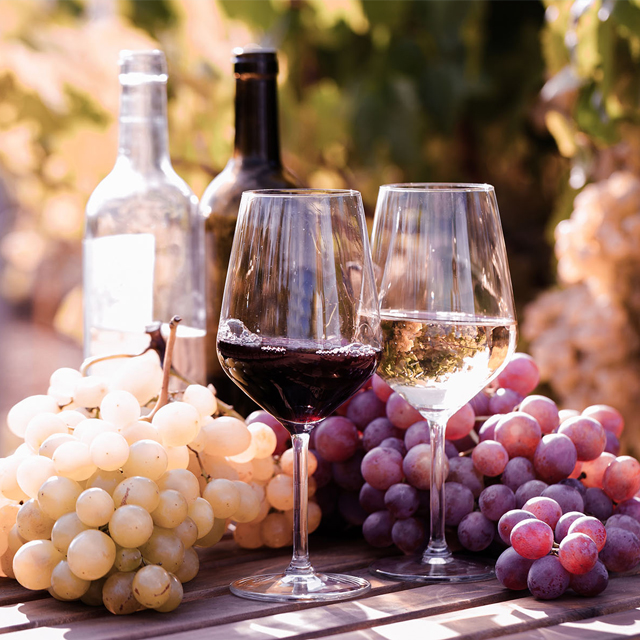Italy
Italy is in close competition with France for the title of largest wine-producer in the world. Italy is responsible for about 25% of the world’s wine production, and puts out over 3 billion bottles annually. Italian wine is exported more than any other wine, with the US, Germany, and Great Britain being its primary importers. In fact, 30% of its exported wine, or over 1 billion bottles, is exported to the US, and one in three bottles consumed by Americans is Italian wine.
Geographical characteristics such as its long shoreline, numerous mountains and foothills, and various soil conditions contribute to Italy’s success in vine growing. Additionally, because Italy boasts a wide range of climates ideally suited to growing grapes, it has become one of the most diverse and prolific wine producers in the world. There are over 2000 grape varieties indigenous to the country, allowing for the production of wines with a vast spectrum of flavors and aromas. Italian wine includes everything from the very dry to the super-sweet, red, white, rose, sparkling and fortified, and from the traditional styles to the more modern.
Italy is divided into 20 regions. Veneto, Trentino-Alto Adige, and Friuli-Venezia Giulia are located in the northeast and collectively are known as the Tre Venezie. There are five regions in the north and northwest, including Lombardy, Emilia-Romagna, Piedmont, Liguria, and Aosta Valley. Central Italy has six regions, including Tuscany, Lazio, Umbria, Marche, Abruzzo, and Molise. In Southern Italy, along with its islands of Sicily and Sardinia, there are Campania, Basilicata, Puglia, and Calabria. The leading regions in terms of volume are Veneto, Apulia, Sicily, and Emilia-Romagna. The highest quality wine is normally attributed to the regions of Piedmont and Tuscany.
INTERESTING FACTS:
In ancient times Italy was often called “enotria”, meaning “land of wine,” because of its plethora of grape varieties and vast amount of land allotted to growing vines.
Winemaking in the region dates back over 4000 years, but began to really flourish with Greek colonization around 800 BC. The Greeks, the Etruscans, and the Romans took a great interest in winemaking, and successfully improved and pioneered new winemaking techniques throughout the years.
In 1963 the first Italian system for classification of wines was introduced, modeled after the French AOC laws.
The word “Riserva” on an Italian wine label describes a wine that has been extensively aged. “Classico” refers to a geographic area in which the proportion of fine wines is higher than in other areas. “Superiore” is a term also found on labels, and normally means the wine has a higher alcohol content, and occasionally extra aging.
Some of Italy’s most famous red wines are Barolo, Brunello di Montalcino, Amarone, Taurasi, Nobile di Montepulciano, Bolgheri, Gattinara, and Chianti. Famous whites include Fiano di Avellino, Gavi di Gavi, Greco di Tufo, Soave, Erbaluce, Verdicchio, Lacryma Christi, and Vernaccia di San Gimignano.
Sangiovese is one of Italy’s most famous grape varieties and is considered the pride of Tuscany. It produces Chianti, Rosso di Montalcino, Brunello di Montalcino, and many more.
LEARN MORE:
http://www.wineloverspage.com/italwineguide/
http://online.wsj.com/news/articles/SB10001424053111904194604576581160159601564
http://www.foodandwine.com/articles/taste-test-winners-italian-value-wines
http://www.jamessuckling.com/italy/
http://www.amazon.com/Vino-Italiano-Regional-Wines-Italy/dp/1400097746
